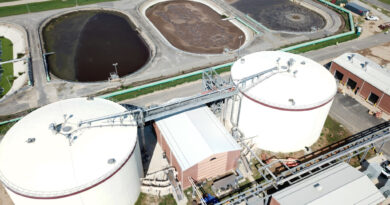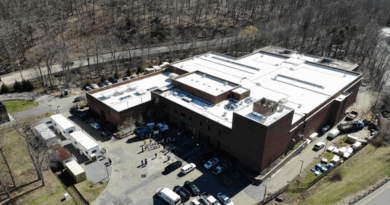Water Is the Backbone to Stable Municipalities
The role of water in any town might be much more crucial than we think
When thinking about how and why a municipality is able to function properly, one of the most vital factors to look at is how strong and well-prepared a community’s infrastructure is. Most of that infrastructure stability involves a series of categories, including the topic of water.
Think about all the ways water can affect a town. Is the community equipped with the proper drainage tools to handle floods caused from a storm? How healthy is the drinking water and how effectively can contaminated water be treated? Is the city’s wastewater being routed and managed properly? Although just one piece to the entire infrastructure puzzle, water is a subject that should be emphasized because of how many different ways it can affect a community.
Every four years, the American Society of Civil Engineers comes out with a comprehensive report card that assesses the current state of the nation’s infrastructure with a letter grade. The most recent report gave the U.S. a “C-” grade—hardly a passing grade. Each category is also individually graded. Drinking water in our nation earned a “C-,” stormwater received a “D,” while wastewater was stamped with a “D+.”
Let’s take Hurricane Helene, the storm that is currently ravaging through the southeastern region of the nation, for example. As of press time, there have been upwards of 20 fatalities and flooding throughout different areas affected by the hurricane. Realistically, there’s no way we’ll always be 100% ready for when natural disasters occur, but what we can do is set ourselves up for success as best we can.
One Florida city took it upon itself to do its very best to get ahead of the storm. Days before the expected hurricane hit, the city of St Petersburg, Florida offered a number of services and items to its citizens to help prepare, per 10 Tampa Bay.
The city made sandbag pickup locations available to community members, deployed sweepers and response teams to clean out drains and made pump stations available in the most vulnerable areas.
Not only do floods wreak havoc for roads, homes and structures alike- they can also impact municipal water quality. If a drainage system isn’t up to par, the risk for polluted stormwater runoff, and even in certain cases wastewater, entering and contaminating water bodies becomes a major issue.
Having water that’s drinkable and safe is another must for any community. There are some water systems in certain areas of the country that are in dire need of upgrading or replacement.
The Pierre Drinking Water Treatment Facility, which we cover on page 24, in Pierre, South Dakota is a great example of how towns can approach an outdated water system. The community had originally been served by a well system that utilized ground water. After traces of iron and manganese were found in the groundwater, residents of Pierre pushed local lawmakers to consider building a water treatment facility that grabs water from the Missouri River, treats it, then distributes it.
Not only was this project an example of how to fix an underlying drinking water issue, it also spoke to how lawmakers and citizens can work together to address a major issue.
“(This project) is a dynamite example of responsive government,” said City of Pierre Communications Manager Brooke Bohnenkamp. “The public asked for it, and we delivered.”
There are a multitude of resources out there for water industry professionals. It just so happens that October is also the same month that WEFTEC is happening. WEFTEC is a water-themed convention and exhibition that allows water quality pros to educate, train and empower their peers on all things H2O. Hopefully, you’re already in attendance on Oct. 5 to Oct. 9 in New Orleans once this issue of American Infrastructure is released. But if not, this event is always one to look out for each and every year.
While all parts of our nation’s infrastructure are all equally important, the condition of our nation’s water management systems is a subject that can have a residual effect on other categories. Having the right protocols in place and the necessary upgrades to existing systems plays a crucial role in helping communities thrive.




